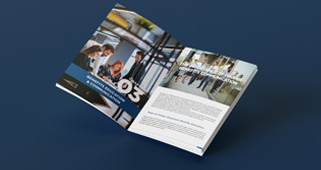In today’s dynamic business landscape, companies are constantly seeking innovative ways to streamline their operations while providing competitive benefits to attract and retain top talent. Two popular solutions that have gained traction in recent years are Professional Employer Organizations (PEOs) and Associated Health Plans (AHPs). While both offer benefits administration services, they differ significantly in their structures, functionalities, and legal implications. In this article, we’ll delve into the nuances of PEOs and AHPs, helping you make informed decisions for your organization.
Professional Employer Organizations (PEOs):
PEOs have emerged as a strategic ally for businesses, especially small and mid-sized enterprises, looking to outsource various HR functions. By entering into a co-employment relationship with a PEO, companies can delegate responsibilities such as payroll processing, employee benefits administration, compliance management, and risk mitigation.
One of the key advantages of partnering with a PEO is access to a comprehensive suite of employee benefits typically reserved for larger corporations. These benefits may include health insurance, retirement plans, workers’ compensation coverage, and other perks. PEOs leverage their collective bargaining power to negotiate favorable rates with insurance providers, offering cost-effective solutions to their client companies.
From an administrative standpoint, PEOs assume the role of the employer of record for payroll and tax purposes, alleviating the administrative burden on client businesses. They handle tasks such as tax withholding, filing, and reporting, ensuring compliance with federal, state, and local regulations. Additionally, PEOs often provide HR expertise, assisting clients with recruitment, onboarding, performance management, and employee relations.
Despite the benefits they offer, it’s essential for companies to understand the intricacies of the co-employment relationship with a PEO. While the PEO assumes certain HR responsibilities, the client retains control over day-to-day operations, including hiring, supervision, and termination of employees. Clear delineation of roles and responsibilities is crucial to maintaining a harmonious partnership.
Associated Health Plans (AHPs):
AHPs have gained prominence as a means for small businesses and self-employed individuals to pool their resources and access more affordable health insurance options. Unlike traditional group health plans, which are typically sponsored by a single employer, AHPs allow unrelated businesses to band together under a common association to purchase health coverage.
One of the primary advantages of AHPs is their ability to offer economies of scale. By aggregating the purchasing power of multiple small businesses, AHPs can negotiate lower premiums and administrative fees with insurance carriers. This enables participating employers to provide comprehensive health benefits to their employees at competitive rates, enhancing their overall compensation packages.
AHPs also offer flexibility in plan design, allowing employers to tailor benefits to meet the specific needs of their workforce. Whether it’s choosing between different coverage levels, provider networks, or ancillary benefits, employers have greater autonomy in selecting the right insurance options for their employees. Additionally, AHPs may offer ancillary benefits such as dental, vision, and disability insurance, further enhancing the value proposition for participants.
However, it’s essential to recognize the regulatory considerations associated with AHPs. Recent changes in federal regulations have expanded access to AHPs by relaxing certain eligibility requirements. While this has opened up new opportunities for small businesses, it has also raised concerns about potential gaps in coverage and regulatory oversight. Employers considering AHPs should carefully evaluate the legal implications and compliance requirements to mitigate any risks.
Key Distinctions:
While both PEOs and AHPs offer benefits administration services, they operate under distinct models with different implications for employers:
- Employer Structure: PEOs operate under a co-employment model, where they become the employer of record for payroll and tax purposes. AHPs, on the other hand, are formed through associations of unrelated employers who retain their individual identities.
- Scope of Services: PEOs provide a comprehensive range of HR services beyond benefits administration, including payroll processing, compliance management, and risk mitigation. AHPs primarily focus on offering health insurance benefits, although they may also provide ancillary coverage options.
- Regulatory Landscape: PEOs are subject to regulations governing co-employment relationships, tax compliance, and labor laws. AHPs must adhere to regulations governing multiple employer welfare arrangements (MEWAs), including ERISA, ACA, and state insurance laws.
In conclusion, both PEOs and AHPs offer viable solutions for businesses seeking to enhance their benefits offerings and streamline HR operations. However, it’s essential to carefully evaluate the unique features and regulatory considerations of each option to determine the best fit for your organization’s needs. Whether you opt for the comprehensive services of a PEO or the cost-saving potential of an AHP, strategic decision-making and thorough due diligence are key to maximizing the value of your benefits program.
For further insights into PEO solutions and how they can benefit your organization, I recommend visiting Benely’s PEO Solutions page. Benely offers comprehensive PEO services tailored to meet the diverse needs of businesses, providing expertise and support to help you navigate the complexities of HR management and benefits administration effectively. Explore their offerings to discover how partnering with a reputable PEO broker like Benely can empower your business to thrive in today’s competitive marketplace.






